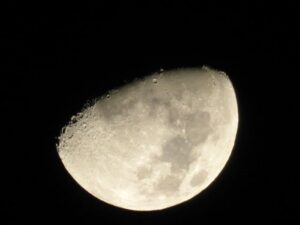By PETRA EVERTSZ features@algarveresident.com
Beauty therapist Petra Evertsz is the owner of the Art of Beauty salon in Almancil which opened its’ doors in 2005. Prior to this she had a beauty salon in Albufeira for 10 years. Originally from Holland, Petra has lived in Portugal for nearly 20 years. She regularly follows the latest treatment courses abroad to make sure she is always updated and earning new qualifications.
There are a lot of misunderstandings concerning lasers/ IPL devices and their applications.
What exactly is Laser and what is IPL?
Laser stands for Light Amplification by Stimulated Emission of Radiation. Laserlight is a small bundled beam of light of one wave length which moves forward. Medical lasers are named after the material by which the energy is stimulated. For example Co2, Argon and Krypton lasers use carbon dioxide gas, the Ruby and Alexandrite lasers use special crystals and the Dye and Excimer lasers use chemical fluids. This determines the colour of the laserlight and reversed the colour of the light determines the effect on human tissue.
IPL stands for Intense Pulsed Light. IPL devices are not lasers because of the light that these devices emit – the waves are not coherent as with lasers and the light contains different colours. IPL produces lots of different wavelengths which are then being filtered into smaller wavelengths for treatment. IPL machines have bigger treatment areas, making treatment quicker. The light or energy is being transmitted with an IPL device, therefore the strength is lower and the treatment is safer. Because of the pulsing of the light, the skin has more time to cool and still the energy is sufficient to denature the proteins in the follicle.
So what is the difference between a laser and an IPL machine when it comes to hair removal?
Really there is no difference when it comes to hair removal, as light is used for both systems and it is the light that eliminates the follicle in the end.
Pigmentation disorders, couperose, scars and wine stains can all be treated with an IPL machine.
How many treatments a person needs varies and depends on several factors. For hair removal, for example, it is important to know that hairs grow in a cycle, there is an active growing phase (anagen), a transition phase (catagen) and a rest phase (telogen). Only hair in the growing phase can be destroyed. For example only 10 per cent of the hair in the ear is in the growing phase, which means that you will need at least 10 treatments to treat all the hair in this growing phase. After treatment, the next treatment needs to be repeated one to two months later.
Is it painful?
No, most people don’t experience any pain during the treatment. It feels as if someone is shooting an elastic band against your skin. Treatment for vascular or pigmented lesions are more painful, though.
Are there any risks involved?
There are no risks but there are contra-indications, if you are using antibiotics, for example, you’re far more sensitive to light therapy.
While having treatments with laser or IPL, it is best to avoid too much sunlight and to use a high factor sunscreen.
For skin rejuvenation, the fractional laser treatment is a new technique which significantly reduces skin ageing signs and acne or surgical treatment injuries. It produces thousands of microscopic damaged columns under the skin, leaving the surrounding tissue intact. This technique forces the regeneration of new skin within the micro-columns, while the surrounding untreated areas contribute to accelerate the natural healing time. This technique is called Fractional Resurfacing. No pain, no downtime! This treatment can be used on sensitive areas such as face, neck, hands and chest!
Available at Art of Beauty, Almancil. Tel: 289 355 901.
























